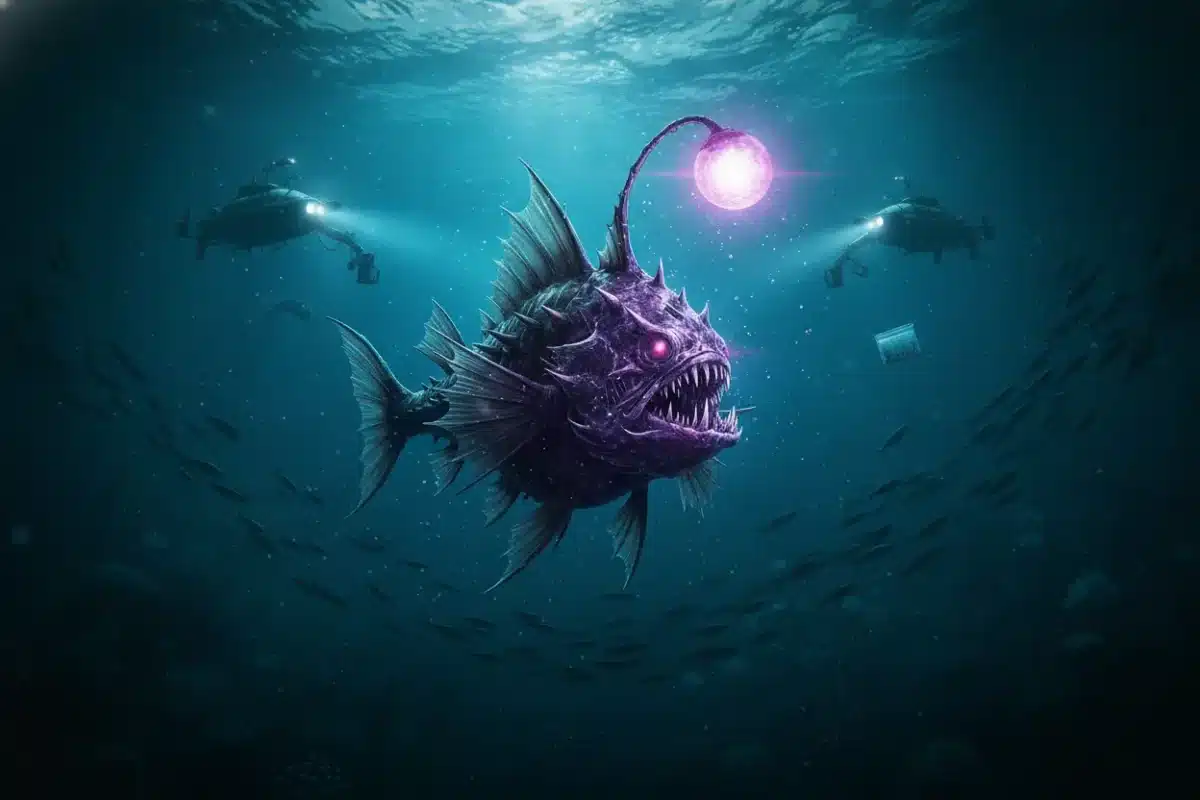Show summary Hide summary
Just when you thought it was safe to go back in the water, scientists plumbed the darkest depths of the sea—and stumbled across a ruthless new predator lurking where sunlight is a distant memory. Meet Dulcibella camanchaca, the shrimp-like creature no one saw coming, quietly rewriting what we know about life deep beneath the ocean’s surface.
A Predator Born of Darkness
Imagine drifting down to nearly 8 kilometers below sea level, into the cold abyss of the Atacama Trench off Chile and Peru. Down here, every hour is midnight, and survival demands some serious adaptations. It’s in these conditions that researchers discovered what, at first glance, seemed an unassuming amphipod about four centimeters in length. Don’t be fooled by its size or shy appearance. Dulcibella camanchaca is, in fact, a fearsome predator of the depths—proof positive that good things (or terrifying ones, depending on your perspective) can come in small packages.
Armed with specialized prehensile appendages, Dulcibella camanchaca pursues its primary prey, other amphipods, hunting in perpetual darkness. What sets this tiny terrors apart is not just its appetite, but its ability to swim swiftly under pitch-black conditions—a key to its predatory success. If there were an Olympic event for stealth swimming in total darkness, this creature would have its claws on gold.
Johanna Weston, co-director of the study at the Woods Hole Oceanographic Institution (WHOI), explains the naming inspiration: “We named it after the word for ‘darkness’ in Andean languages to reflect the shadowy environment where it hunts.” A fitting tribute for an animal that quite literally owns the night.
A Breakthrough Expedition and a New Branch on the Tree of Life
The story of Dulcibella camanchaca owes much to the 2023 IDOOS (Integrated Deep-Ocean Observing System) expedition, which turned the spotlight onto this elusive denizen of the deep. With the help of a team from Chile’s Instituto Milenio de Oceanografía (IMO), researchers captured four specimens, enabling detailed morphological and genetic analysis.
The results? Groundbreaking. Not only did they confirm that this predator is a brand-new species, but they also established that Dulcibella camanchaca belongs to an entirely new genus. For those dusting off old biology notes, here’s a quick refresher:
Species: Organisms that are closely related, physically similar, and produce fertile offspring.
Genus: A wider category gathering multiple species—think of it as a previously undiscovered branch on our collective tree of life.
By identifying a new genus, scientists are quite literally revealing a hidden family of organisms where once there was nothing but question marks.
What the Deep Sea Still Hides
This striking find is a real wake-up call. According to co-director Carolina González, the hadal zones—those remote, often inhospitable areas of the deep sea—are far from empty wastelands. On the contrary, she says: “The hadal zones are rich in unique biodiversity, and we are only beginning to understand the extent of life that thrives there.” The message is clear: we’ve barely scratched the surface of one of the most mysterious regions on Earth.
Discoveries like Dulcibella camanchaca also emphasize the urgent need for continued research and conservation. Despite being far removed from regular human activity, even these deep-sea strongholds remain vulnerable to our actions. Protecting their fragile ecosystems is not just good stewardship—it’s necessary if we hope to keep encountering wonders like this shrimp-like predator in the future.
The Next Frontiers and a World of Unanswered Questions
As exploration marches onward, the hadal zones persist as one of our planet’s final frontiers. The addition of Dulcibella camanchaca to the ever-growing catalog of ocean life is proof that new chapters await just below the surface (well, way below the surface). Advancements in technology promise that even more secrets will rise from the depths in coming years—new species, new ecosystems, and more reminders that the real world is sometimes stranger than fiction.
So, what’s next? Scientists will keep going deeper, hunting for the answers the abyss still guards so jealously. Each new discovery doesn’t just fill in gaps; it raises new questions about how life manages to not only survive but thrive under the planet’s most extreme conditions.
A word to the curious: The ocean’s mysteries are far from solved, and if Dulcibella camanchaca is anything to go by, the abyss still has plenty of tricks up its sleeve. Stay tuned—there’s surely more where this came from.
Give your feedback
★★★★★
Be the first to rate this post
or leave a detailed review

